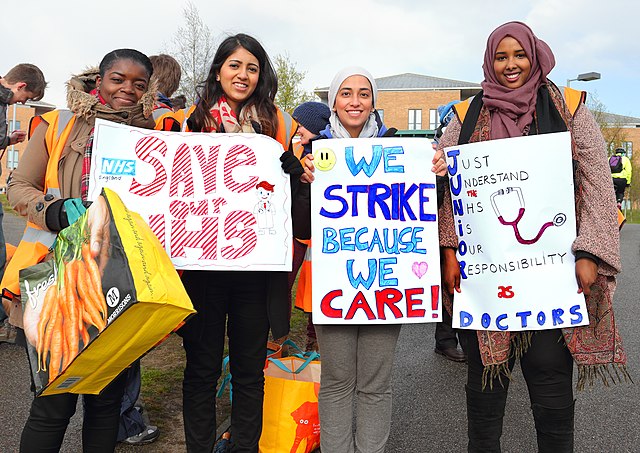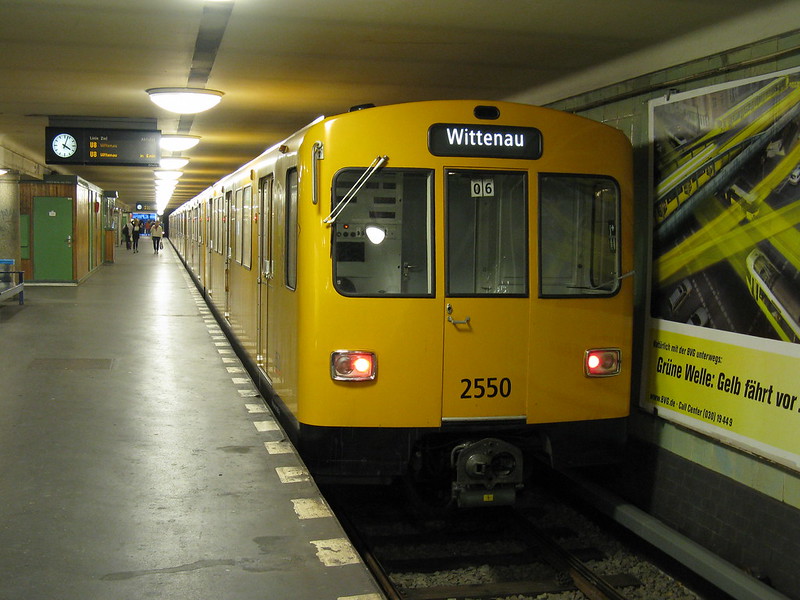Becoming a doctor requires five years at medical school; this is then followed by two years of foundation training before entry into core/specialty training (three years for general practice and five to seven years for a hospital specialty). Only when this lengthy postgraduate period has been satisfactorily completed do doctors move from the ranks of ‘junior doctor’ (JD) into senior roles. The term JD is considered by some to be misleading since it encompasses not only newly qualified staff but others who have many years’ experience, leading some to call for a change in terminology.
JDs have been among many sections of the NHS workforce (nurses, physiotherapists, midwives, ambulance staff, radiographers, and consultants) to have taken strike actions throughout 2023 and during a time that Jeremy Hunt had declared the greatest staffing crisis in the history of the NHS and social care.
The first ever strike undertaken by JDs was in 1975 – with the second not until 2016 – over a new contract that sharply reduced the number of hours paid at higher rate and to which they were forced to concede. The third dispute is ongoing with 34 days of action throughout 2023 ending with an unprecedented six days in succession in January 2024. A further ballot is now planned from February 7th – March 20th seeking to extend the mandate for industrial action.
What is the strike about?
The BMA is asking for a 35% rise to restore pay to where it was 15 years ago, recognising this may need to be implemented over several years. The figure was arrived at by using the Retail Prices Index to assess the impact of inflation on salaries, arguing that since 2008 there has been a 26.1% loss of earnings. While the Office for National Statistics criticised this approach (advocating for the Consumer Prices Index) the Royal Statistical Society opined that RPI is the better indicator of change in cost of living, backing the BMA. Additional demands included that the Review Body on Doctors’ and Dentists’ Remuneration become more independent of government when making recommendations for pay awards, and that once pay had been restored, consideration be given to how such severe erosion could be prevented in the future.
Of the 75,000 whole time equivalent JD in training roles, around 50,000 are members of the British Medical Association (BMA), while smaller numbers are members of the TUC affiliated Hospital Consultants and Specialist Association and Doctors in Unite. For the BMA, 77% of those eligible to vote in the February 2023 ballot did so, with 98% voting in favour of strike action. Six months later the figures had barely changed at 71% and 98%. Public support has been strong, but given the BMA does not have an established strike fund (relying on voluntary donations), some doctors may find extending action increasingly difficult for financial reasons. Government has taken the stance that 35% is unaffordable and unreasonable, and has offered only a sub-inflation figure of around 11%. JDs have pointed out that to accept such an offer would be agreeing to a pay cut in real terms.
The JDs have appeared solid and well organised, sharing a wealth of useful information to guide effective strike action and gaining support from consultants (engaged in their own pay dispute). This has led to right wing opprobrium, for example, in Policy Exchange. Reports in The Telegraph have also suggested that a small group of “radical activists” must have taken over the BMA, putting forward such “revolutionary” demands as calling for an NHS Staff Charter, a fund to meet postgraduate medical examination costs, and improvement in representation of junior doctors in deliberations about rota and service design across the NHS!
It is not just about pay
There are many other reasons for JDs being disaffected, with 40% saying they are thinking of leaving the NHS. Causes include chronic vacancies, short staffing on any given day (1,400 doctor posts), burnout from experiencing the Covid-19 pandemic – including the huge scale of deaths, feeling undervalued by government, and ‘moral injury’ caused through being unable to provide the appropriate standards of care to patients. In addition, the old close-knit hospital teams offering mutual support have long since disappeared. Some observe that doctors have become ‘proletarianised’, their activities increasingly circumscribed by a dominant management body preoccupied with cost savings and budgets.
Other persistent grievances involve bureaucracy, lack of a quiet space to write up notes and order tests, outdated and slow IT systems, no provision for a restorative nap on night shift when quiet and no food availability, nowhere to safely store personal possessions/drinks bottle/packed lunch when at work, working long shifts with anti-social hours, no guaranteed breaks for rehydration, eating or even to use the toilet, and bitter memories of being refused PPE by some managers who wrongly insisted that Covid-19 was not principally spread by aerosol. Complaints also focus on strict training structures, the pressure to make an immediate career decision and a bullying culture at work.
Car parking costs have risen to around £1000/year, and child nursery care averages £1000/month. Of course plenty of other less well-paid staff feel these pressures too, and unsurprisingly, just as with JDs, many have come to regard the NHS as a bad employer. Note also that the average medical student debt at the start of their working life stands at £71,000. There are then mandatory recurrent costs in the form of medical Royal College membership subscriptions, General Medical Council (GMC) fees, and medical indemnity. Fees for college exams and during specialty training can add up to thousands of pounds.
On another front, with 8,728 vacancies across the medical workforce, the planned increase in Medical Associate Professionals (MAP) from 3,500 to 12,000 raises concerns that rather than appoint more doctors, workforce gaps will be filled by non-medical graduates. Although medical student places are being increased, retention is a huge challenge when around a third of medical students plan to leave the NHS within two years of graduating, and only 56% of those doctors who enter core training remain working in the NHS eight years later. Writing off student loan debt has been suggested as one strategy to improve retention. With unsustainable workload pressures, General Practitioner (GP) trainees are opting to work part time, meaning the NHS gains only one whole time equivalent GP for each two training places. JDs have raised questions as to why MAP are initially being paid more than themselves – despite having much less training and responsibility – and whether they are in competition for training opportunities. The development of medical apprenticeships as an alternative way into medicine piles on further worry as do bottlenecks in training which see career progression to senior positions blocked.
We must value and support staff to keep them in the NHS
A survey by the GMC found an increasing number of medical trainees experiencing burnout (emotional, physical, and mental exhaustion), with one in five junior doctors at high risk in 2022, compared to one in seven in the previous year. For some specialties, such as emergency medicine, this was as high as one in three in 2022. Doctors experiencing burnout are more likely to consider leaving the profession. A recent survey found that 18% of doctors considered leaving the profession in 2021 – up from 12% in 2019. Problems retaining JDs have knock-on implications for the number of consultant vacancies. A report on staff retention by the Nuffield Trust found that in the year to December 2021, one in 12 GPs left. In total, around 140,000 of NHS staff (one in nine/11%) left the NHS in the year to September 2021; this included one in 10 nurses and one in 18 consultants.
The most common reasons given for leaving were stress, shortage of staff and resources, and low pay.
Conclusion
It makes no sense to drive staff away from the NHS given the huge and increasing patient waiting lists. While there is now a workforce plan of sorts, throwing more staff into a system that many now consider to be a kind of mincing machine while not addressing retention is both costly and untenable. MAP should not be seen as the solution to this problem and must raise serious concerns over patient safety. Pay restoration should be an immediate priority, but there are many other things the NHS needs to do to become a good employer and show proper concern for staff and their wellbeing. A win for JDs would strengthen the pay demands and negotiating power of other staff groups. Ultimately, good patient care depends upon well-trained staff feeling supported and adequately remunerated and wanting to work in the service.




